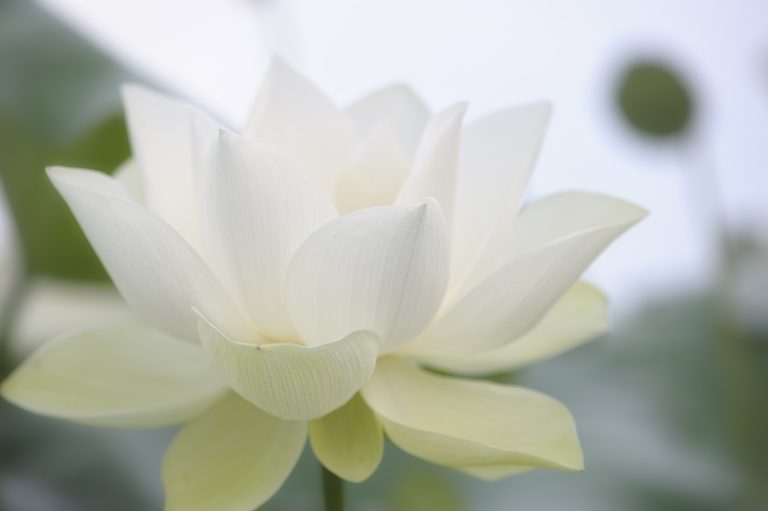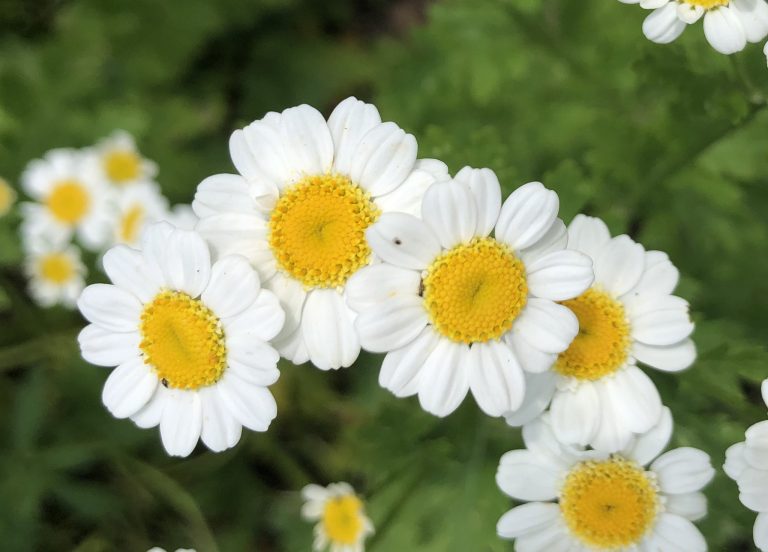The lovely white lotus, with its enchanting beauty and fragrance, is universally admired for its pure and enduring nature. Owing to its many healing properties, the entire lotus plant has also been employed in Traditional Eastern medicine and food for millennia.
The lotus is India’s national flower. For many religions, the white lotus flower has spiritual implications and is considered sacred. It represents purity in Buddhism, Hinduism, and other religious faiths. Ayurveda has utilized this white lotus medicinally for millennia to treat a wide range of illnesses.
Nelumbo Nucifera, also called Sacred Lotus, laxmi lotus, Indian lotus, and the bean of India, is a fresh-water plant typically found in ponds, marshes, and the shallow areas of lakes. It is one of two extant species of lotus, originating from Asia and northern Australia. Its cousin Nelumbo lutea is native to North America.
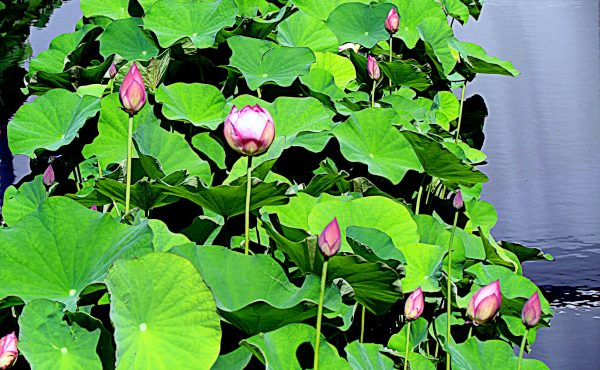
The distinction between a lotus and a water lily
Lotuses and water lilies are often taken for the same plant, even though they belong to completely different families. The water lily is a member of the genus Nymphaea, in the Nymphaeaceae family, whereas lotus belongs to the genus Nelumbo, of the Fabaceae family.
The confusion that stems from their similar looks is confounded by the fact that they sometimes take on each-others’ common names. For instance, the Egyptian blue lotus is actually a water lily. To distinguish them, one can simply look at two features:
- Lotus flowers have a prominent seed pod in the center that grows to eventually yield large seeds which can be popped like popcorn. Water lilies have no discernable pod, and produce tiny seeds that resemble poppy seeds.
- Lotus leaves and flowers both rise above the water, while water leaves always float on the surface. Also, the lotus flower is unique in that it submerges itself at night, to emerge fresh each morning — one reason it symbolizes eternal life in Buddhism.

Description of white lotus
Success
You are now signed up for our newsletter
Success
Check your email to complete sign up
Nelumbo Nucifera flowers can be various shades of pink to pure white, while Nelumbo lutea (American lotus) comes in pale shades of yellow.
The white lotus is particularly appealing, with its pristine beauty emerging daily from the murky waters where its roots are anchored in muck. It symbolizes light shining through the darkness, and purity rising above filth.
Lotus flowers feature blunt-ended petals, and can reach up to 12 inches in diameter. They last for three days, and have a mild, but pleasant, fruity scent. Flowers open in the morning, face the sun and fold up in the evening.
The lotus has homogenous green, spherical leaves ranging in diameter from 18 to 36 inches.
All parts of the plant are valued for both nutritional and therapeutic properties.
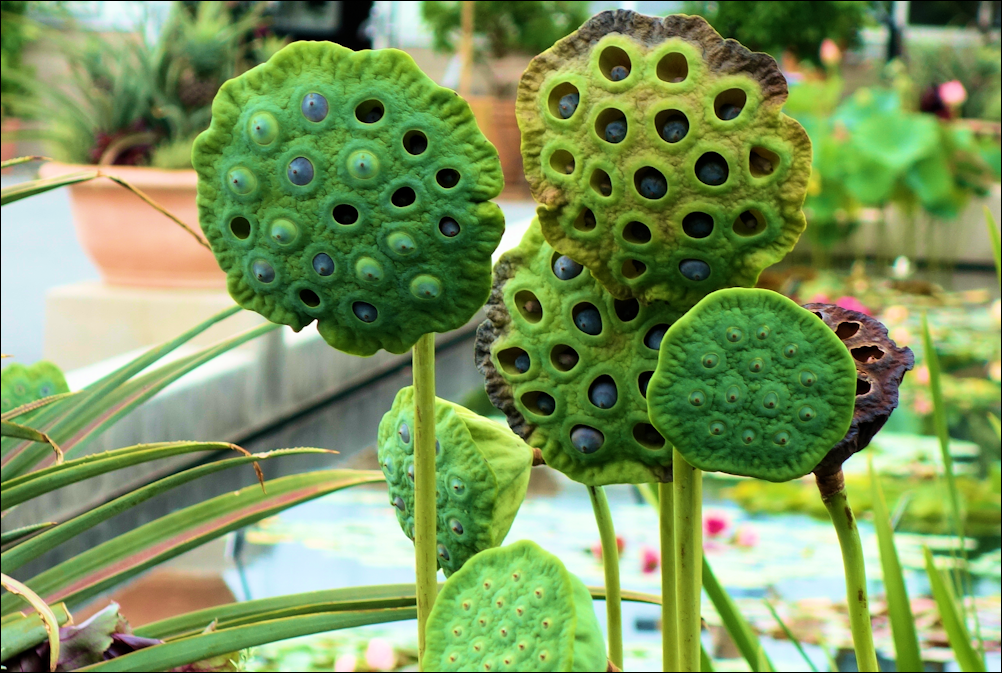
Lotus seeds and longevity
Lotus plants have long flourished in slow-moving river flood plains and delta environments. Every year, hundreds of thousands of lotus seeds drop to the bottom of the bed. The bulk are eaten by animals, and some germinate soon after they drop, but the remaining seeds can go dormant for extended periods of time, even if its water source dries up.
During floods, sediments harboring these seeds break loose, allowing the dormant seeds to rehydrate and form a new lotus colony.
The recovery of 1,300-year-old lotus seeds from a dried lakebed in northeastern China demonstrated that lotus seeds can remain viable for hundreds of years. Seeds that had their outer shell manually removed were still able to absorb moisture and germinate, reinforcing the Chinese connection between lotus and longevity.
Lotus as food
The lotus rhizome, seeds, stem, leaf and flower are all edible parts of the plant. Lotus roots can be cooked and used like potatoes, while the seeds are used whole in traditional Chinese mooncakes, ground into flour for noodles and breads, popped as a snack, boiled in soups, and more. All parts of the plant can be dried and used in tea.
Try making popped lotus seeds (Phool Makhana) at home:
- Start with four tablespoons of ghee in a hot frying pan.
- Add one cup of dried lotus seeds.
- Sauté the lotus seeds in a skillet until golden brown.
- Season with salt and pepper before removing from the heat.
This simple and pleasant snack has many health benefits.

Medicinal value of lotus
Protects from Hepatitis: Armepavine, an active compound present in lotus seeds, has been proven effective in treating hepatitis B.
Detoxifies the body: Lotus seeds and leaves contain a number of different antioxidants — including catechin, chlorogenic acid, kaempferol, and quercetin — which help remove toxins, free radicals, and unwanted chemicals from the body.
Enhances Immune system: Lotus flowers and roots are rich in Vitamin C, a vital nutrient for immunity.
Controls obesity: Lotus leaves have high concentrations of flavonoids, which assists in digestion, boosts energy and facilitates weight loss. The leaf also contains L-Carotene, which boosts metabolism.
Combats infections and inflammations: Lotus leaves also exhibit antibacterial and anti-inflammatory properties to help combat a variety of illnesses.
Other health benefits from the consumption of lotus include alleviation from stress, reduced symptoms of diabetes, heart health, improved hair and skin conditions, and lowered blood pressure.
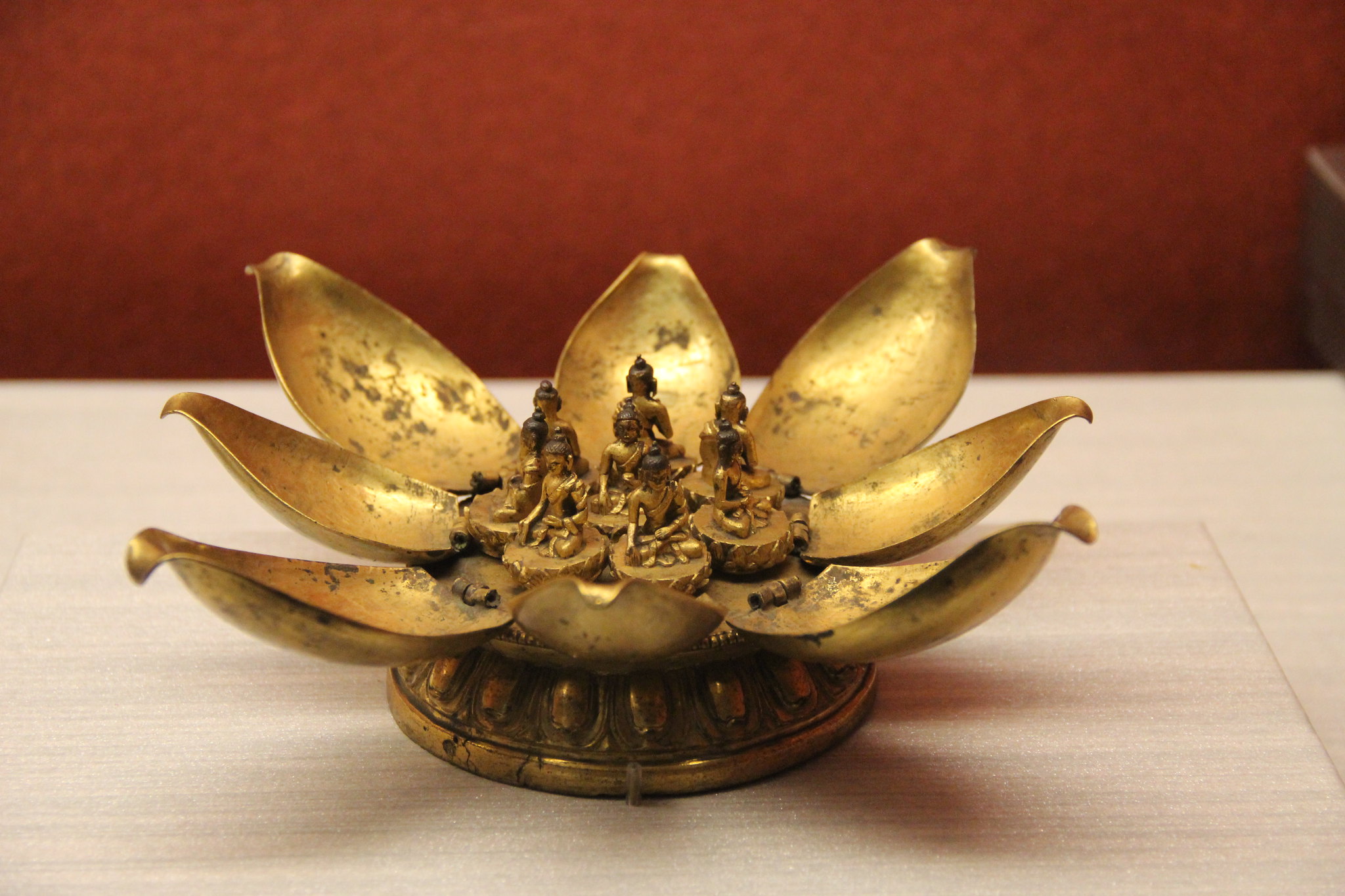
Spiritual significance
The white lotus signifies beauty, purity, faith, and graceful endurance, and represents a person’s spiritual awareness and heart.
The Buddha is frequently represented in a lotus position, sitting cross-legged atop a fully developed white lotus flower. The Noble Eightfold Path of the Good Law is represented by a white lotus flower with eight petals.
The white lotus flower denotes purity of mind, body, and spirit in the Buddha school, which teaches that suffering is part of being human, and that letting go of worldly attachments is required to obtain enlightenment and bliss.
Like a lotus, we all have the potential for divinity. If we maintain purity amidst corruption and take hardship as joy, our true self will eventually emerge — noble and glorious.
READ ALSO
- Love Lotus? You Can Grow Them at Home
- Healing Herbs and Spices of India Part III – Ceylon Cinnamon
- Ginseng: A (Conditional) Traditional Medicinal That You Can Grow at Home
- The Enchanted Elder: Folklore, Medicine and Cultivation of Elderberry
Ila Bonczek contributed to this report.



